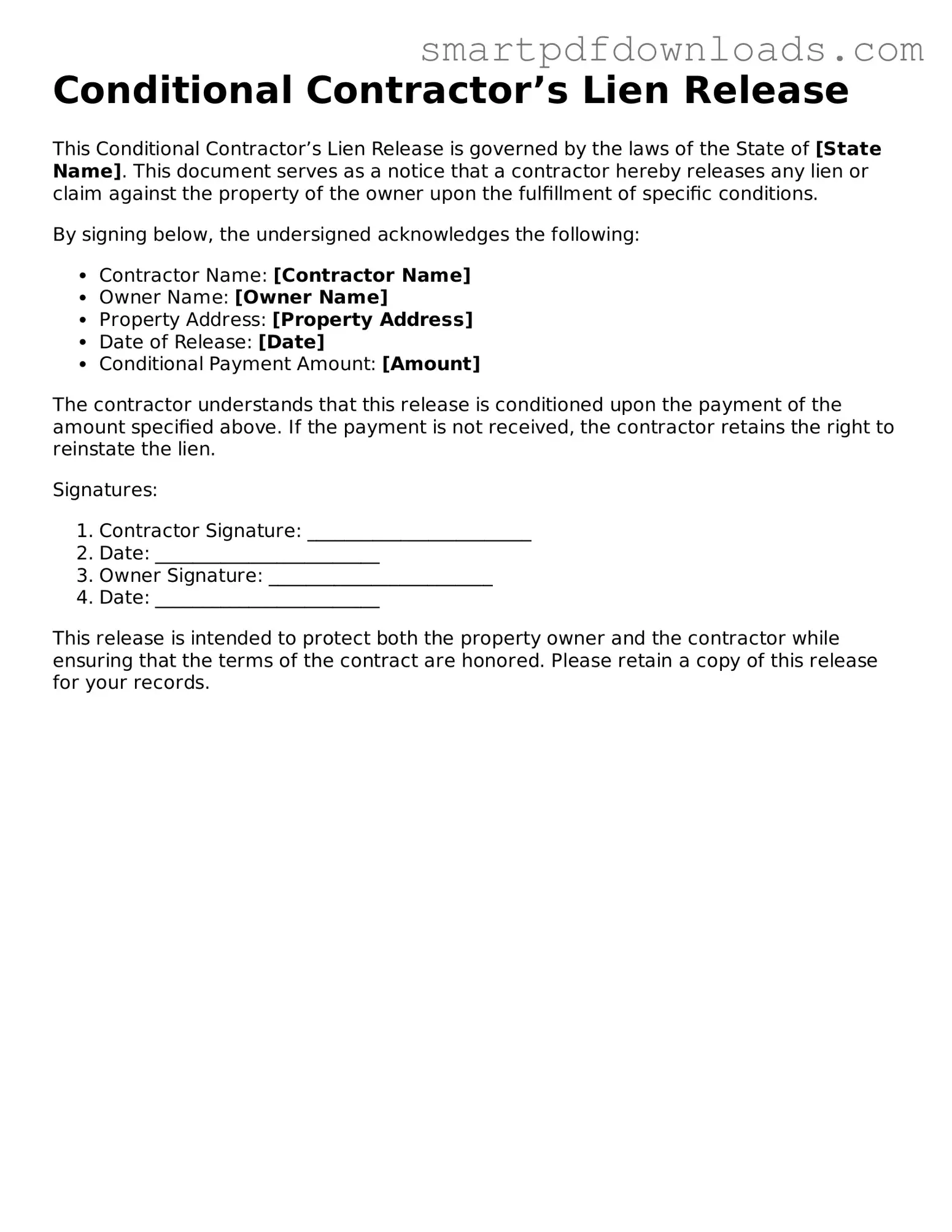Free Conditional Contractor’s Lien Release Form
The Conditional Contractor’s Lien Release form is a legal document that allows contractors to release their lien rights on a property, contingent upon receiving payment. This form is essential for ensuring that contractors can secure payment while also protecting the property owner's interests. Understanding this form can help both parties navigate the complexities of construction projects more smoothly.
Edit Conditional Contractor’s Lien Release Online
